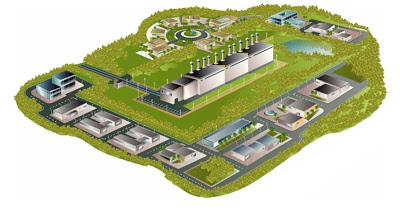Spain gets about twenty percent of its electricity from seven nuclear power reactors. In 1983, the Spanish government put in place a moratorium on the construction of new nuclear power reactors or the relicensing of existing nuclear power reactors. For many years, Spain had a policy of replacing nuclear reactors with renewable energy sources. The forty year old Jose Cabrera nuclear power plant was shut down in 2006. In 2011, the Spanish government cancelled the moratorium. Now power reactor owners are able to apply for 10 year extensions for operating nuclear power plants.
Enresa is a public company created by the Spanish government in 1984 to manage the treatment, conditioning, storage and disposal of radioactive wastes produced in Spain. This includes spent fuel from nuclear power reactors as well as radioactive chemicals used in laboratories. When Spanish nuclear power reactors are shut down permanently, Enresa is responsible for dismantling them.
Since 1984, Spain has created and implemented six General Radioactive Waste Plans. The sixth and most recent Plan was implemented by resolutions of the Congressional Commission for Industry in 2006. Among other things, it called for creating the Centralized Temporary Storage (CTS) facility for spent nuclear fuel and high level radioactive wastes from Spanish reactors and laboratories.
Enresa has just called for bids to carry out major civilian construction work at the CTS in central Spain. "The scope of the work to be carried out under the contract includes construction of the used fuel and waste reception building, processing buildings, phases 1 and 2 of the storage modules, a storage container warehouse and a waste container maintenance workshop. It also includes the construction of used fuel and radioactive material laboratory, radioactive waste treatment facility and other ancillary buildings." The maximum cost of the project will not exceed two hundred and eighty three million dollars.
The first step in the construction project will be obtaining a municipal building permit and a construction license from the Ministry of Industry. Construction is to take about five years. The town of Villar de Cãnas in the central province of Cuenca province was selected as the site of the facility in 2011. Currently, spent nuclear fuel assemblies are stored on site in canisters at the nuclear power plants around Spain. With the completion of the CTS, the canisters will be shipped to Villar de Cãnas for storage.
The waste will be repackaged in smaller containers and placed in a dry store cooled by passive circulation of air. About thirteen thousand cubic yards of waste are to be stored at the facility for sixty years. At the end of sixty years it is expected that there will be a permanent geological repository for nuclear waste in Spain. Considering problems that other countries including the U.S. have had in building permanent geological repositories for spent nuclear fuel, the anticipated Spanish permanent repository may not be ready in sixty years to receive nuclear wastes.
Artist's conception of Enresa Centralized Temporary Storage facility:
